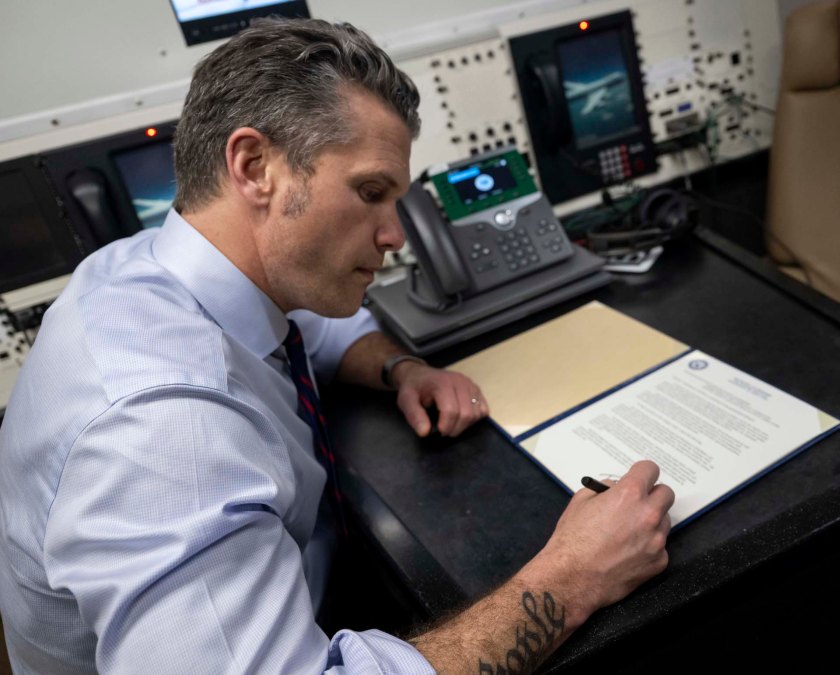DOD reopens deferred resignation program amid push to reduce civilian workforce

Defense Secretary Pete Hegseth is reopening the deferred resignation program and also offering early retirement to eligible civilian workers as he seeks to “maximize participation.”
Hegseth signed a memo on Friday, “Initiating the Workforce Acceleration and Recapitalization Initiative,” that was directed to senior Pentagon leadership, combatant commands, and defense agency and field activity directors. The move comes as department leaders are looking to shed civilian employees and reinvest the savings elsewhere as part of the Trump administration’s Department of Government Efficiency efforts.
“It’s an important new opportunity to right-size DOD,” Hegseth said in a video.
“The Under Secretary of Defense for Personnel and Readiness (USD(P&R)) will immediately open the DoD Deferred Resignation Program and offer the Voluntary Early Retirement Authority to all eligible DoD civilian employees. Exemptions should be rare. My intent is to maximize participation so that we can minimize the number of involuntary actions that may be required to achieve the strategic objectives,” Hegseth wrote in the March 28 memo, which was viewed by DefenseScoop.
Prior to the issuance of the new directive, the Pentagon was already placing more than 20,000 employees on administrative leave and a path to full termination, following staff approval for voluntary participation in the Trump administration’s previous round of the Elon Musk-inspired “fork in the road” initiative, according to officials.
“Employees who accept deferred resignations should promptly have their duties re-assigned or eliminated and be placed on paid administrative leave until the end of the deferred resignation period (generally September 30, 2025, unless the employee has designated an earlier resignation date), unless the agency head determines that it is necessary for the employee to be actively engaged in transitioning job duties, in which case employees should be placed on paid administrative leave as soon as those duties are transitioned,” the acting director of the Office of Personnel Management wrote in a Jan. 28 memo.
In his March 28 memo, Hegseth emphasized that the department needs to realign resources.
“DoD civilians already support mission-critical requirements, but an honest analysis will reveal opportunities to consolidate duplicative functions, reject excessive bureaucracy, and implement technological solutions that automate routine tasks, particularly at the headquarters level. The net effect will be a reduction in the number of civilian full-time equivalent positions, and increased resources in the areas where we need them most,” he wrote.
Defense officials previously said Pentagon leadership was aiming to reduce DOD’s civilian workforce by 5-8 percent — upwards of 50,000 employees — via multiple pathways, including the Deferred Resignation Program, removing certain probationary employees and instituting a civilian hiring freeze.
“Important changes are required to put the department on ready footing to deter our enemies and fight for peace. This is not about a target number of layoffs at the DoD. The intent is to execute a top-to-bottom methodology that results in a force structure that is lean, mean, and prepared to win,” Hegseth wrote in the new memo.
He directed the secretaries of the military departments, chairman of the Joint Chiefs of Staff, directors of defense agencies and field activities, and his principal staff assistants to deliver a “proposed future-state organizational chart.”
“It will reflect required analysis and include functional areas, consolidated management hierarchy, and position titles and counts clearly depicted,” he wrote.
The undersecretary of defense for personnel and readiness is expected to submit the initial proposal to Deputy Secretary of Defense Stephen Feinberg by April 11.






